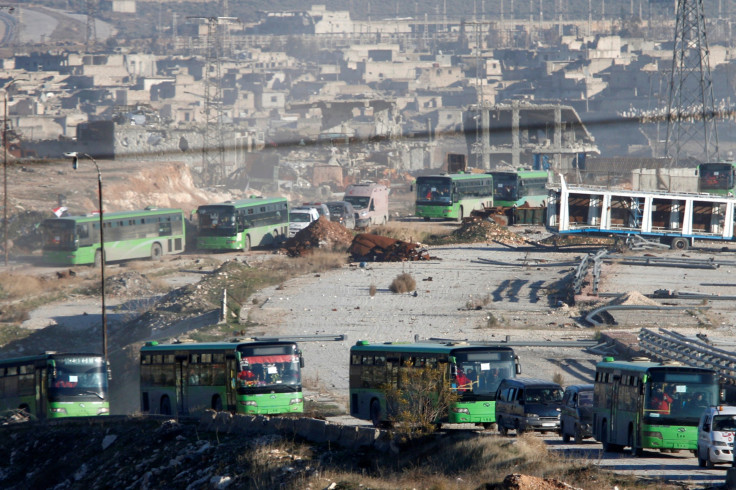Does The US Support Syria? Russia And Washington's Involvement Explained

The International Committee of the Red Cross announced Thursday more than 1,000 civilians were evacuated from the remaining rebel-held pockets of eastern Aleppo as the result of a deal brokered by Syrian government and opposition forces, with input from their respective allies.
Citizens of Aleppo, once Syria's largest city and commercial capital, were subject to years of violence after anti-corruption protests in 2011 transformed into armed opposition to Syrian President Bashar Assad. Western-backed rebels took the city in 2012 when it became a stronghold for anti-government militants and witnessed frequent clashes among the war's various factions. A lightning advance in recent weeks by the Syrian army saw Assad re-establish control over the city with each side accusing the other of atrocities against civilians.
Assad's change of fortune was partially thanks to large-scale Russian intervention last year. A massive campaign of airstrikes against opposition targets came to the relief of Syria's embattled military, which suffered years of territorial losses against a wide range of opposition groups including jihadist organizations such as Jabhat Fatah Al Sham, formerly Al Qaeda's al-Nusra Front, and the Islamic State militant group, also known as ISIS. Syrian military allies including the Iranian-backed Lebanese Shiite movement Hezbollah and various militias loyal to the Syrian government bolstered the army, but Russia's air force appeared to make the most visible difference in the fight.
The opposition's decline was also accompanied by a gradual scaling back of support from the U.S. and other Western allies. While Washington was enthusiastic in its rhetorical and political backing of the uprising in Syria, it was always hesitant to become directly involved in the conflict. These fears grew substantially as more radical groups such as Al Qaeda and ISIS gained influence over what the U.S. considered more moderate opposition groups. Worried that heavy weaponry would end up in the wrong hands, the U.S. stuck primarily to providing small arms. Meanwhile, infighting among various groups severely fractured the Syrian opposition.
When the U.S. did take serious action, it was not against the Syrian government, but against ISIS, whose struggle to establish its proclaimed caliphate resulted in widely covered reports of unprecedented brutality across Syria and Iraq. The U.S. and allied nations began conducting airstrikes on ISIS militants, taking pressure off of the Syrian army and allowing it and its allies to focus on other opposition forces. Assad rejected Western calls for a humanitarian ceasefire and vowed to retake the entire country.

Matters were further complicated for the U.S. when one group it did throw its weight behind, the Kurds, began to clash with Syrian rebels. In the battle of Aleppo, Kurdish forces forged an uneasy relationship with the Syrian military to protect the city's Kurdish enclave of Sheikh Maqsoud. Divisions between Kurds and certain Syrian opposition groups worsened after the onset of a Turkish intervention in August. Kurdish forces felt they were the true target. The U.S. was instrumental in defending the Kurds from ISIS attacks in their northern territory.
As the rebels begin to retreat from their largest city and last major urban center in Syria, Washington continues to argue the case for the opposition. The U.S. echoed claims by international organizations including the U.N. of war crimes and human rights violations committed by Syria and its allies. On the battlefield, however, U.S. forces were absent in the fight against Assad.
© Copyright IBTimes 2024. All rights reserved.






















